
On the night of Jul 05/06, 2014, I observed the cataclysmic variable stars ASAS-SN14cv and ASAS-SN14cl. You can read more about these stars, which were both discovered only recently, at
ASAS14cv shows smooth sinusoidal variations of amplitude 0.03 mag at mag V = 13.0 or so, and ASAS14cl has faded to about V = 16.0; it's too faint for me to measure its small variations clearly.
The main setup was:
Notes from the night
Below is a graph showing the sky brightness as a function of time during the observing run.

Below is a graph showing the FWHM as a function of time during the observing run.

Here's a chart of the field of ASAS-SN14cv, which is at
RA = 17:43:48.58 Dec = +52:03:46.8 (J2000)
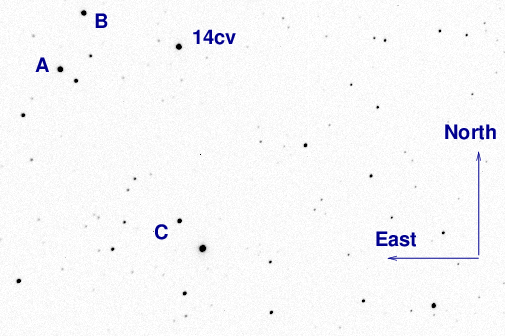
Some of the reference stars marked above have magnitudes in the UCAC4. Specifically, star "A" above is
The television camera on the finder scope shows the following when we're pointed at ASAS-14cv. North up, East left, field about 1 degree on a side.
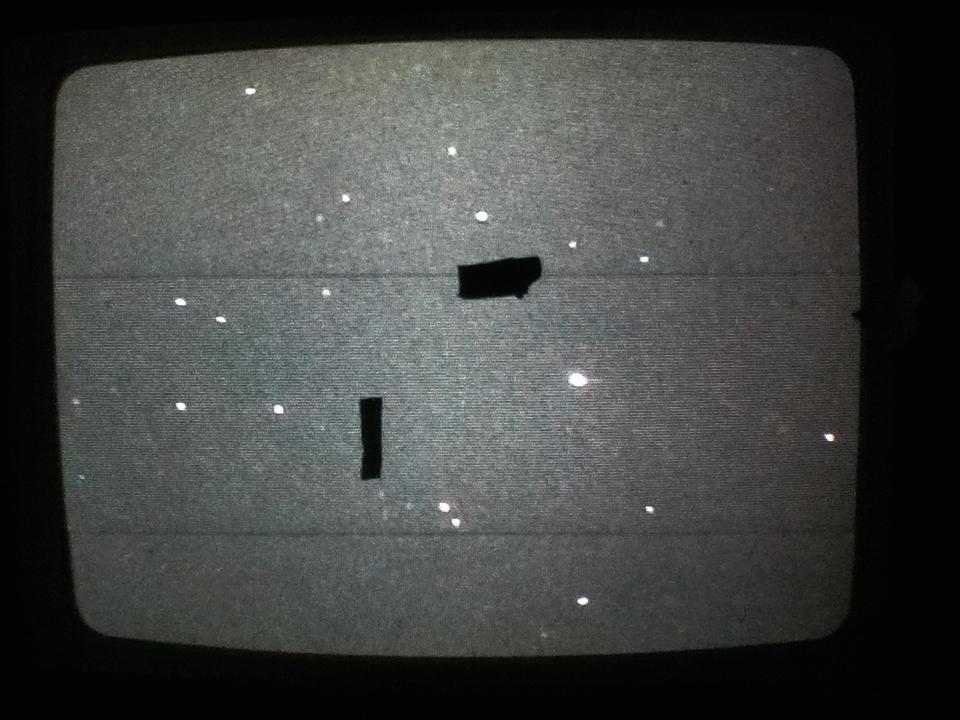
The image adjustment factor graph shows no significant features.
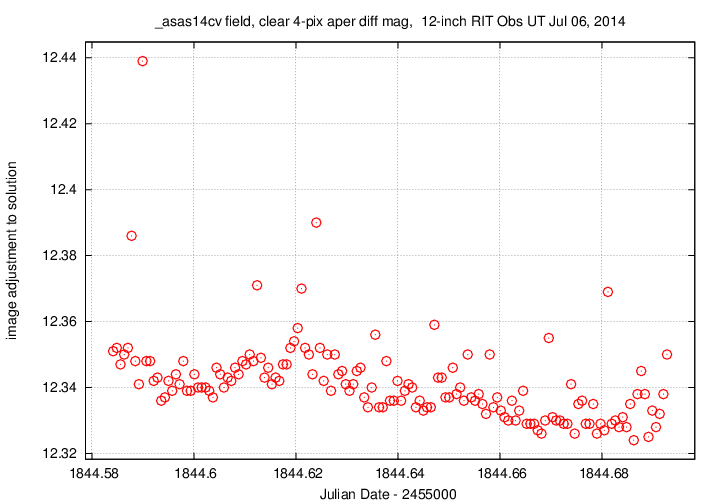
Using aperture photometry with a radius of 4 pixels (radius of 7.4 arcsec), I measured the instrumental magnitudes of a number of reference stars and the target. Following the procedures outlined by Kent Honeycutt's article on inhomogeneous ensemble photometry, I used all stars available in each image to define a reference frame, and measured each star against this frame. I used the UCAC4 V-band magnitude of star "A" to convert the ensemble instrumental magnitudes to a reported "V"-band magnitude (but remember, it's a clear filter).
Sigma-vs-mag plot:
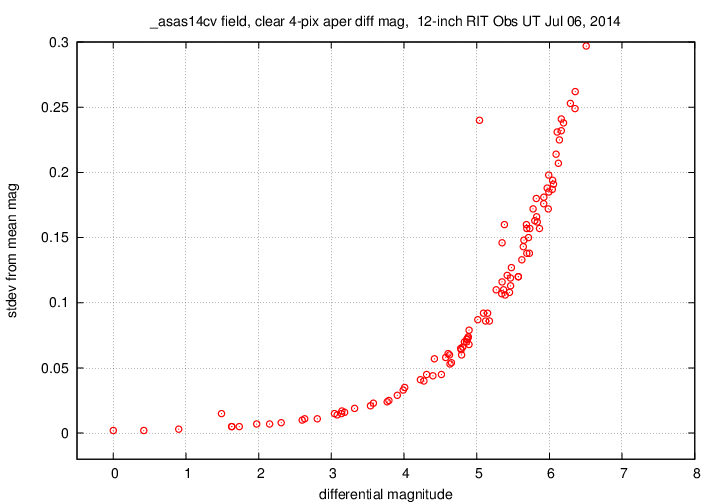
The target had a "V"-band magnitude of roughly 13.0.
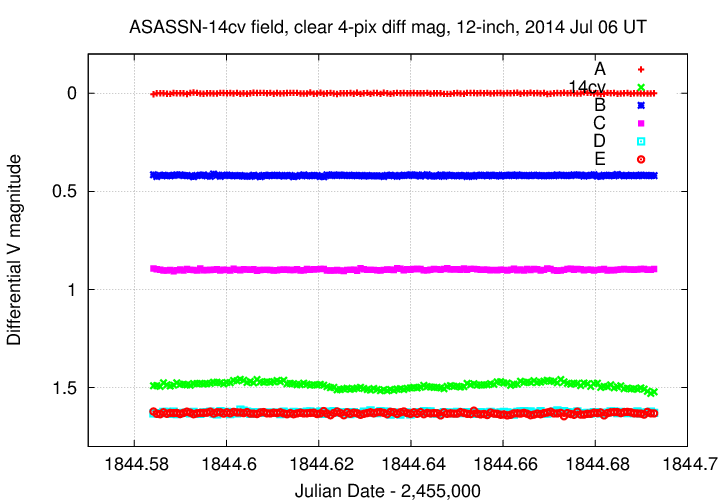
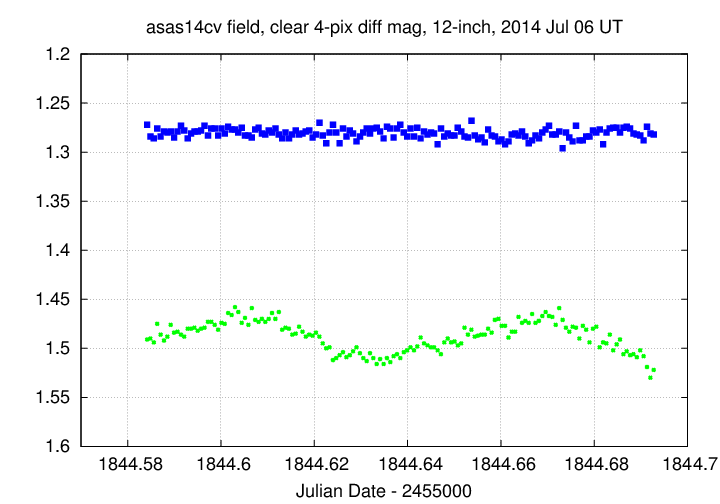
You can see my measurements of the star in the ASCII text file below. The first few lines are shown here:
# Measurements of ASAS_SN14cv made at RIT Obs, Jul 6, 2014 UT, # in good conditions, # by Michael Richmond, using 12-inch Meade and SBIG ST-8E CCD. # Exposures 45 seconds long, no filter. # Tabulated times are midexposure (FITS header time - half exposure length) # and accurate only to +/- 1 second (??). # 'mag' is a differential magnitude based on ensemble photometry # using a circular aperture of radius 7.4 arcseconds. # which has been shifted so UCAC4 711-058151 has mag=11.518 # which is its V-band mag according to UCAC4. # # UT_day JD HJD mag uncert Jul06.08416 2456844.58416 2456844.58552 13.009 0.005 Jul06.08488 2456844.58488 2456844.58624 13.008 0.005 Jul06.08561 2456844.58561 2456844.58697 13.012 0.005
Here's a chart of the field of ASAS-SN14cl, which is at
RA = 21:54:57.62 Dec = +26:41:16 (J2000)
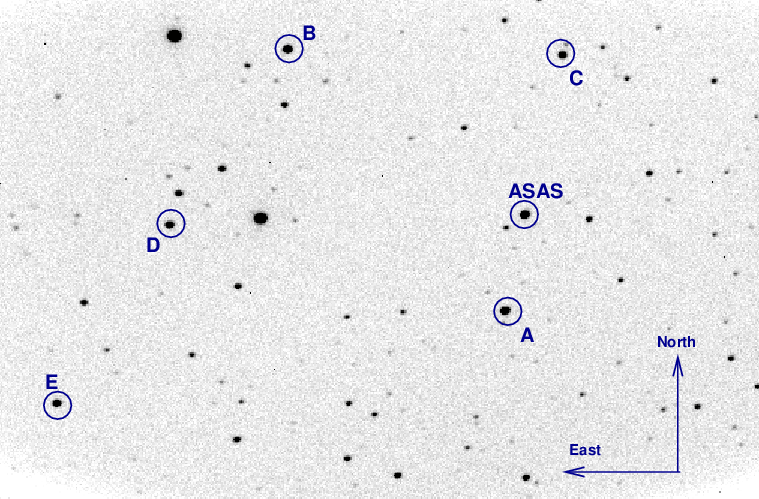
Some of the reference stars marked above have magnitudes the UCAC4 AAVSO chart 13493SS. Specifically, star "B" above is
The television camera on the finder scope shows the following when we're pointed at ASAS-14cl. North up, East left, field about 1 degree on a side.
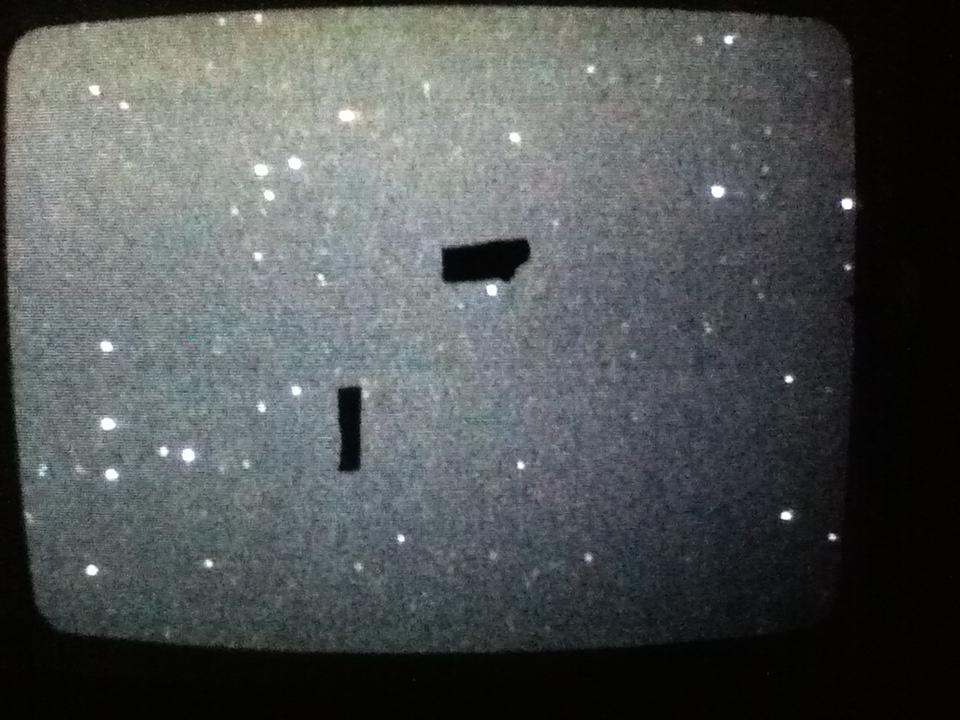
Conditions were good.
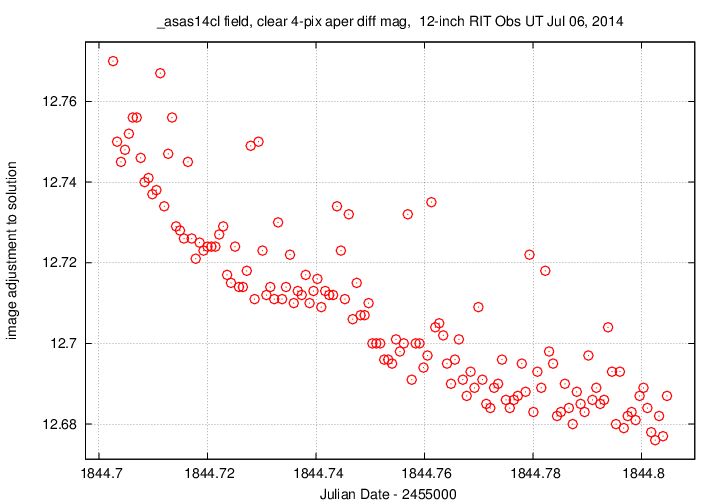
Using aperture photometry with a radius of 4 pixels (radius of 7.4 arcsec), I measured the instrumental magnitudes of a number of reference stars and the target. Following the procedures outlined by Kent Honeycutt's article on inhomogeneous ensemble photometry, I used all stars available in each image to define a reference frame, and measured each star against this frame. I used the AAVSO V-band magnitude of star "B" to convert the ensemble instrumental magnitudes to a reported "V"-band magnitude (but remember, it's a clear filter).
The target is one of the stars with elevated scatter around instrumental mag 4.2.
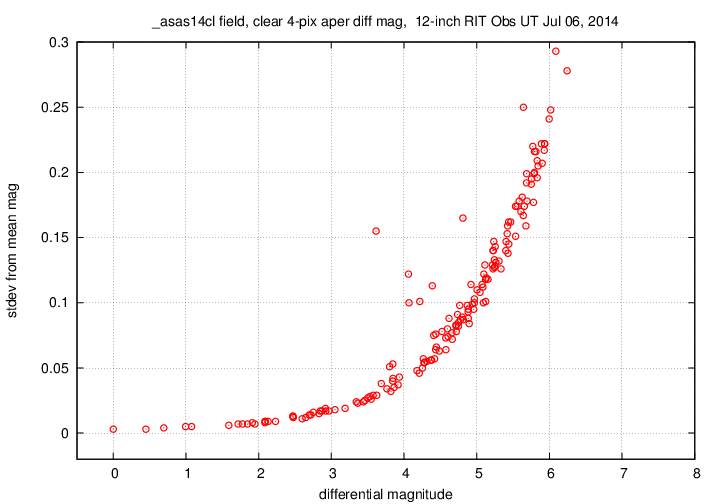
The target had a "V"-band magnitude of roughly 16.0, continuing to fade. Another apparently varying source is USNO B1.0 1166-0569966, at (21 54 44.25, +26 41 37.6), called "shifted X" in the graph below. It appears to be fading throughout the run.
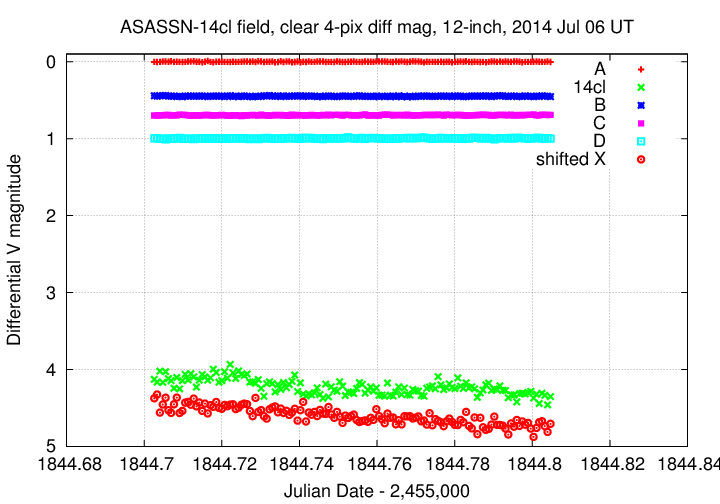
Grab the text file below for all the RIT measurements of ASAS-SN14cl. The header of the file is shown below.
# Measurements of ASAS_SN14cl made at RIT Obs, Jul 6, 2014 UT, # in good conditions, # by Michael Richmond, using 12-inch Meade and SBIG ST-8E CCD. # Exposures 45 seconds long, no filter. # Tabulated times are midexposure (FITS header time - half exposure length) # and accurate only to +/- 1 second (??). # 'mag' is a differential magnitude based on ensemble photometry # using a circular aperture of radius 7.4 arcseconds. # which has been shifted so UCAC4 584-123918 has mag=12.335 # which is its V-band mag according to AAVSO chart 13493SS. # # UT_day JD HJD mag uncert Jul06.20259 2456844.70259 2456844.70507 16.015 0.059 Jul06.20333 2456844.70333 2456844.70581 16.051 0.056 Jul06.20405 2456844.70405 2456844.70653 15.909 0.056
Last modified 7/06/2014 by MWR.